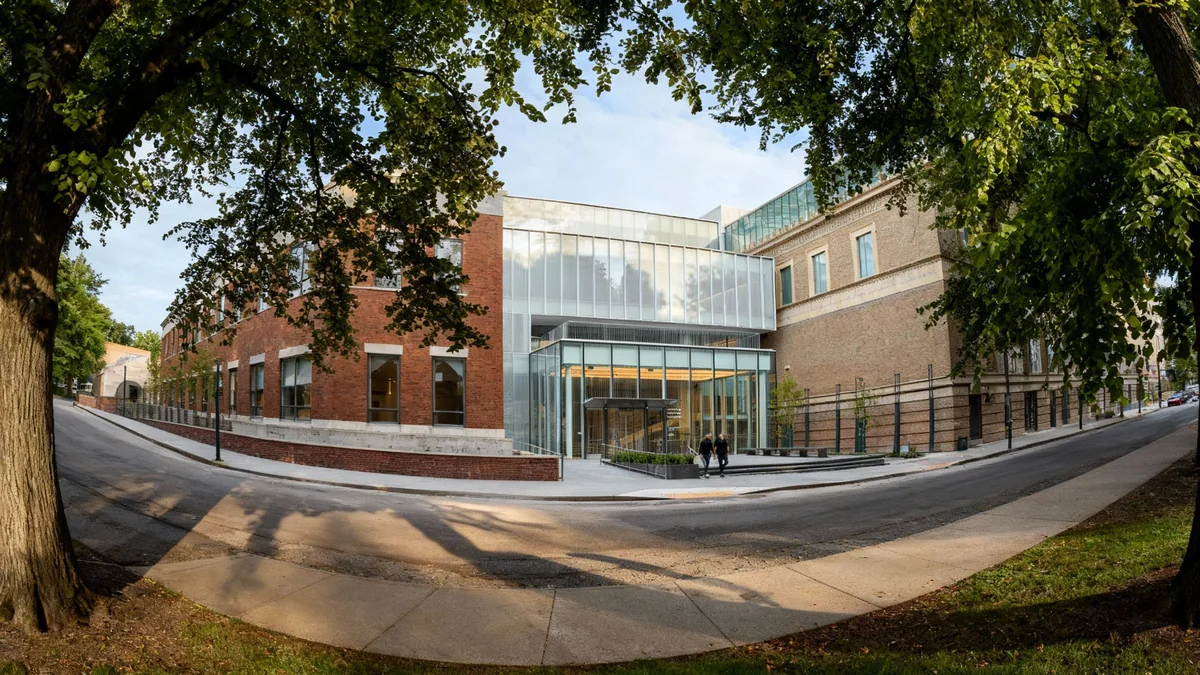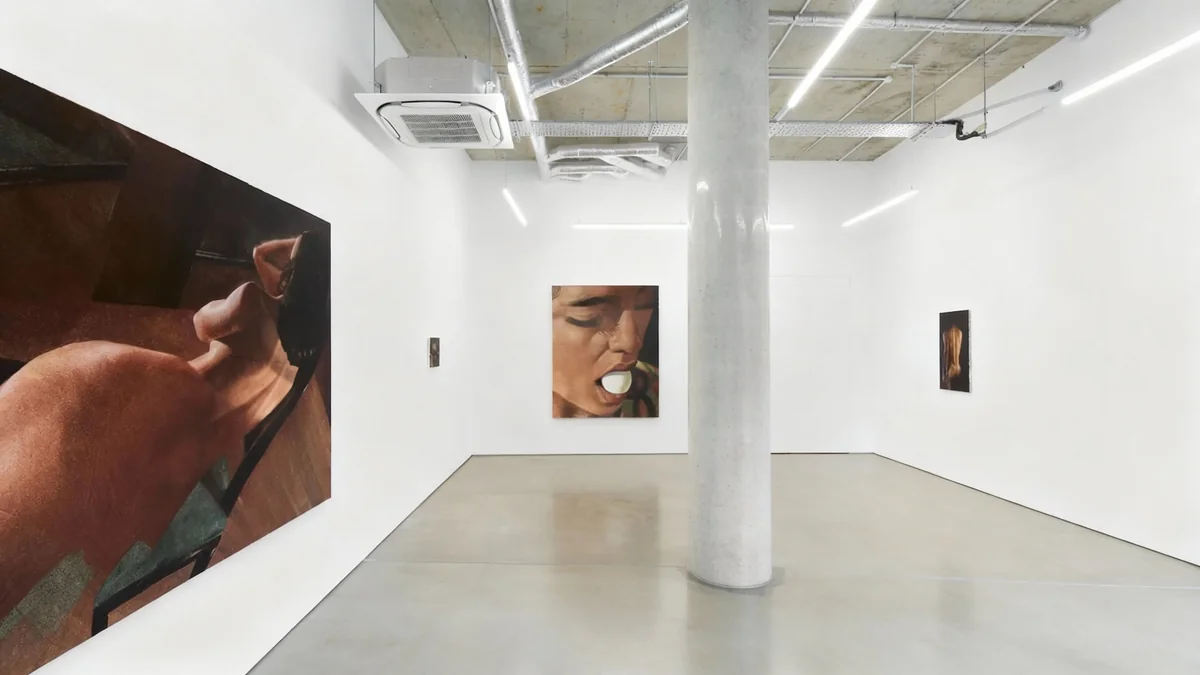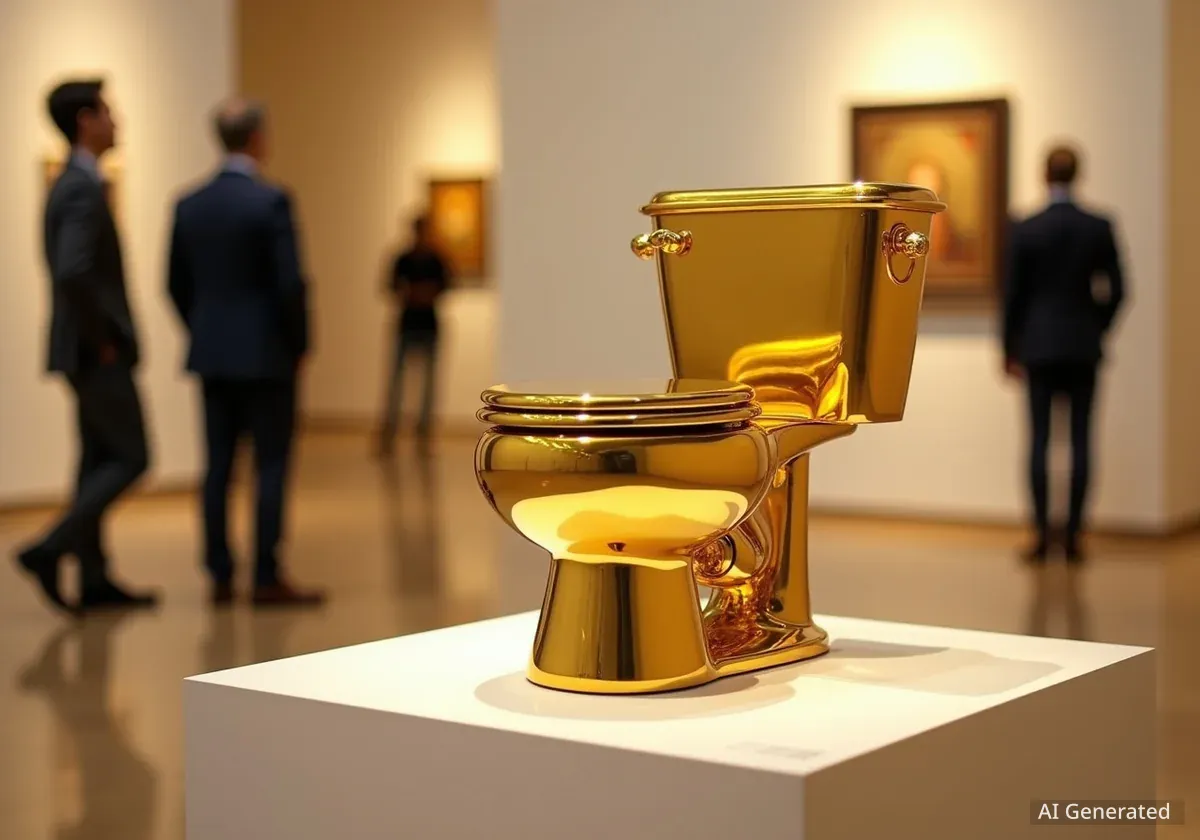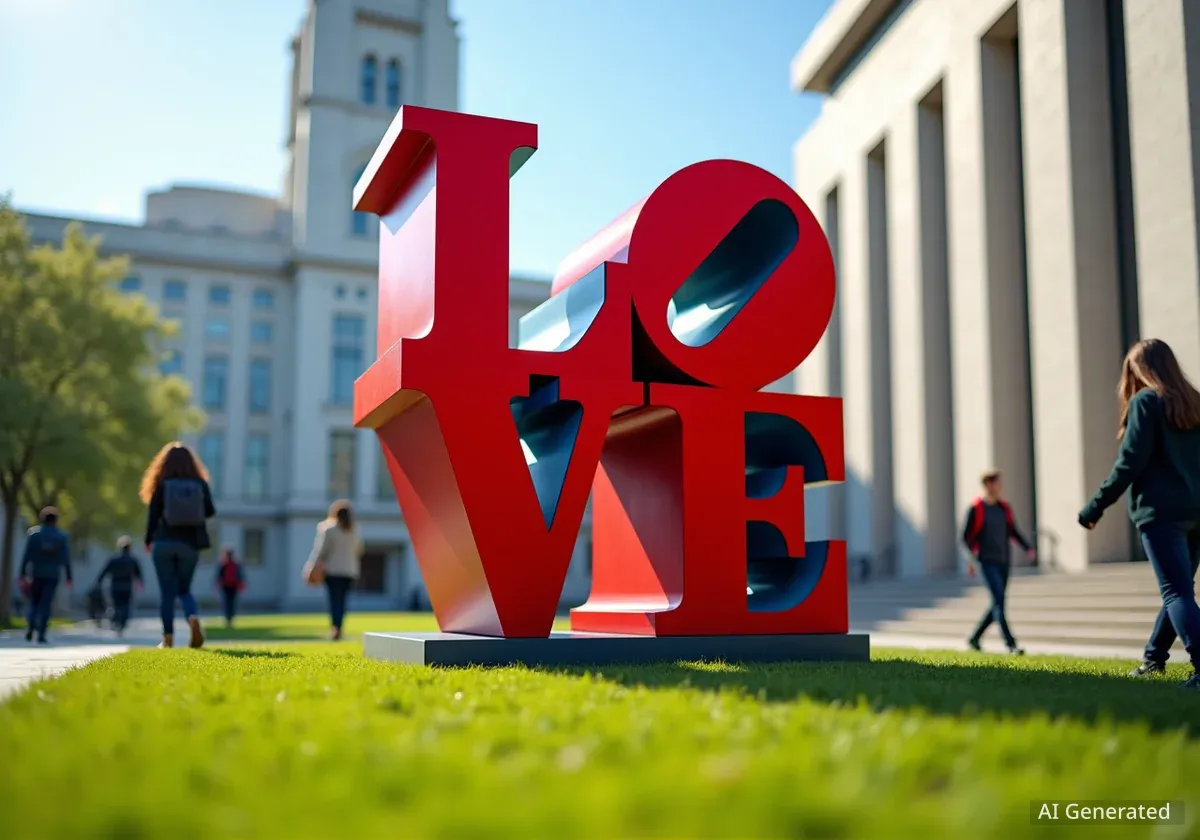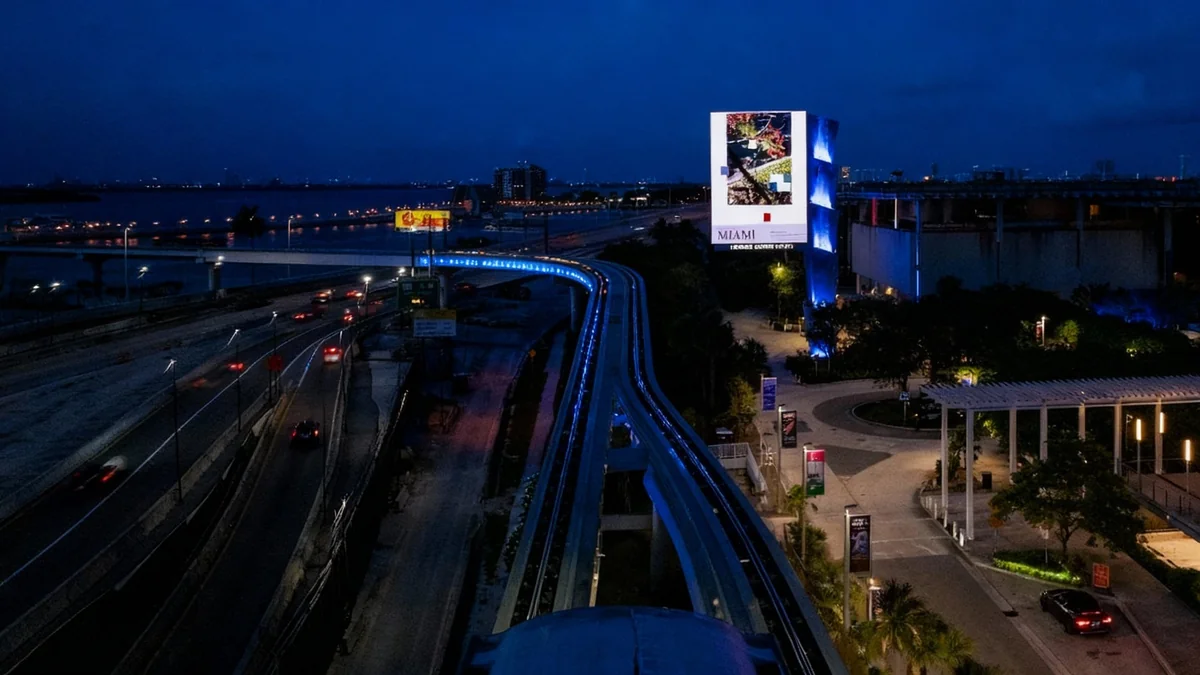The Portland Art Museum has completed a significant $116 million renovation and expansion project, culminating nearly two decades of effort. This transformation includes a new 21,000-square-foot glass structure, the Mark Rothko Pavilion, designed to enhance visitor experience and community connection. The museum also announced an additional $30 million raised for its endowment, bringing the total to $90 million, all achieved without long-term debt.
Key Takeaways
- Portland Art Museum completed a $116 million renovation and expansion.
- The project includes the new 21,000-square-foot Mark Rothko Pavilion.
- An additional $30 million was raised for the endowment, totaling $90 million.
- The entire project was financed without incurring long-term debt.
- The museum focused on local art and community engagement to drive its revival.
A Vision for Revival and Community Connection
Brian Ferriso, the museum's director since 2006, led the extensive revitalization. When he first arrived, the institution faced significant challenges. Ferriso overheard a bystander describe one of the museum's buildings by saying, “I think it’s a museum, but I don’t think anything happens there.” This perception highlighted a need for change.
Early in his tenure, Ferriso discovered the museum was struggling financially. It carried approximately $20 million in debt. Half of this debt stemmed from pledges with very long payment timelines, up to 20 years. The other half was completely unfunded, creating immediate budget gaps.
Financial Snapshot
- Initial debt: Approximately $20 million
- Long-term pledges: Half of the debt
- Unfunded debt: The other half
- Capital campaign goal: $116 million (achieved)
- Endowment increase: $30 million (totaling $90 million)
Marie Watt, an artist and current board trustee, noted that the museum was sometimes seen as “clubby and insular” by parts of the community. This perception, combined with financial instability, underscored the urgent need for a new direction.
Architectural Transformation and New Spaces
The museum's previous layout presented functional difficulties. Its two main structures, the original 1932 building and a Masonic temple acquired in 1994, were connected awkwardly underground. A plaza with a loading dock separated them, creating a barrier rather than a welcoming space.
“They have an incredible collection, and they’ve always been stymied by the space they have to show it,” said Oregon Governor Tina Kotek, emphasizing the limitations of the old design.
The permanent collection of the Portland Art Museum includes 52,000 works. The renovation sought to provide appropriate spaces for these pieces.
The central element of the expansion is the Mark Rothko Pavilion. This 21,000-square-foot glass structure was designed by Hennebery Eddy Architects and Vinci Hamp Architects. It now seamlessly connects the existing buildings, creating a unified campus.
Rothko's Connection to Portland
Mark Rothko (1903–1970), a renowned abstract expressionist painter, spent his childhood in Portland. This connection made him a fitting namesake for the pavilion. The museum has partnered with the Rothko family, who loaned several works for the inaugural exhibition, “The Art of Mark Rothko,” opening with the new building.
The project involved nearly 100,000 square feet of new construction or renovation. All permanent collection galleries have been completely reinstalled. Marie Watt highlighted a key benefit of the new design:
“One thing that’s really transformational is the glass facade and the ability to look inside and see what’s going on, rather than being cloistered,” Watt stated, referring to the Rothko Pavilion.
Her own neon text sculpture, “Shared Horizon (Western Door)” (2022), is a prominent feature in the Grand Gallery of the pavilion.
A Strategy of Financial Discipline and Local Focus
Ferriso’s leadership focused on a clear financial principle: avoid long-term debt. This commitment was central to the capital campaign. The museum received 49 donations of $1 million or more, a diverse funding base that campaign chair Alix Meier Goodman described as more like a “jelly bean” shape than a traditional pyramid with a few large gifts. The state of Oregon contributed $2 million.
“Brian was adamant that the project couldn’t go forward that way,” Goodman said about avoiding debt. “That was his stake in the ground. And that encouraged donors.”
Goodman and her family personally donated $2 million to the project.
Beyond fundraising, the museum shifted its programming to emphasize local art and community preferences. This included featuring more regional artists and exhibitions relevant to Portland’s distinct culture. This approach proved successful, as seen with the 2008 exhibition “Wild Beauty: Photographs of the Columbia River Gorge,” which attracted 80,000 visitors.
Investing in Expertise and Community
Ferriso also invested in the museum's curatorial team, increasing the number of full-time curators to nine. He secured separate endowments for these positions, ensuring their stability. “It sent a message about their importance,” Ferriso explained. “And when the pandemic hit, there was no laying off of curators.”
The museum has also made a strong commitment to highlighting Indigenous artists. Oregon is home to nine federally recognized Indigenous tribes. In 2019, Kathleen Ash-Milby was hired as the curator of Native American art. The newly reinstalled Native American art gallery will feature 40 works by Rick Bartow, an artist of Wiyot heritage.
- Curatorial staff increased to nine full-time positions.
- Positions were endowed separately to ensure job security.
- Focus on Indigenous artists includes new curator and dedicated gallery space.
Navigating Urban Planning and Public Feedback
The expansion project faced some public opposition, particularly regarding its impact on Portland’s walkable urban grid. The new pavilion created a “superblock” where a half-block previously existed. In 2017, some residents protested at City Council meetings, concerned about disrupting the city’s pedestrian and biking-oriented environment.
“There were signs and protests,” Ferriso recalled. “They thought we were disrupting a walkable, biking-oriented city.”
Despite his initial surprise, Ferriso and the board responded to the feedback. They added a public passageway under one part of the pavilion, allowing pedestrians and cyclists to move through the area. This adjustment increased the project’s scope and cost but was seen as crucial for long-term community acceptance.
“I could have forced the situation, but I reflected that that would be winning the battle but not the war,” Ferriso stated.
The engagement paid off, as some former opponents later became museum donors.
A New Chapter for Leadership
As the Portland Art Museum prepares to unveil its revitalized campus in November, Brian Ferriso announced his departure. He will become the director of the Dallas Museum of Art in December, which is also embarking on its own expansion. The Portland museum's trustees honored Ferriso by naming the new park-facing plaza after him.
“I teared up,” Ferriso said, reflecting on the tribute.
This project represents a model for other cultural institutions facing financial and engagement challenges. By prioritizing financial prudence, local relevance, and community collaboration, the Portland Art Museum has achieved a significant turnaround, setting the stage for its future.
